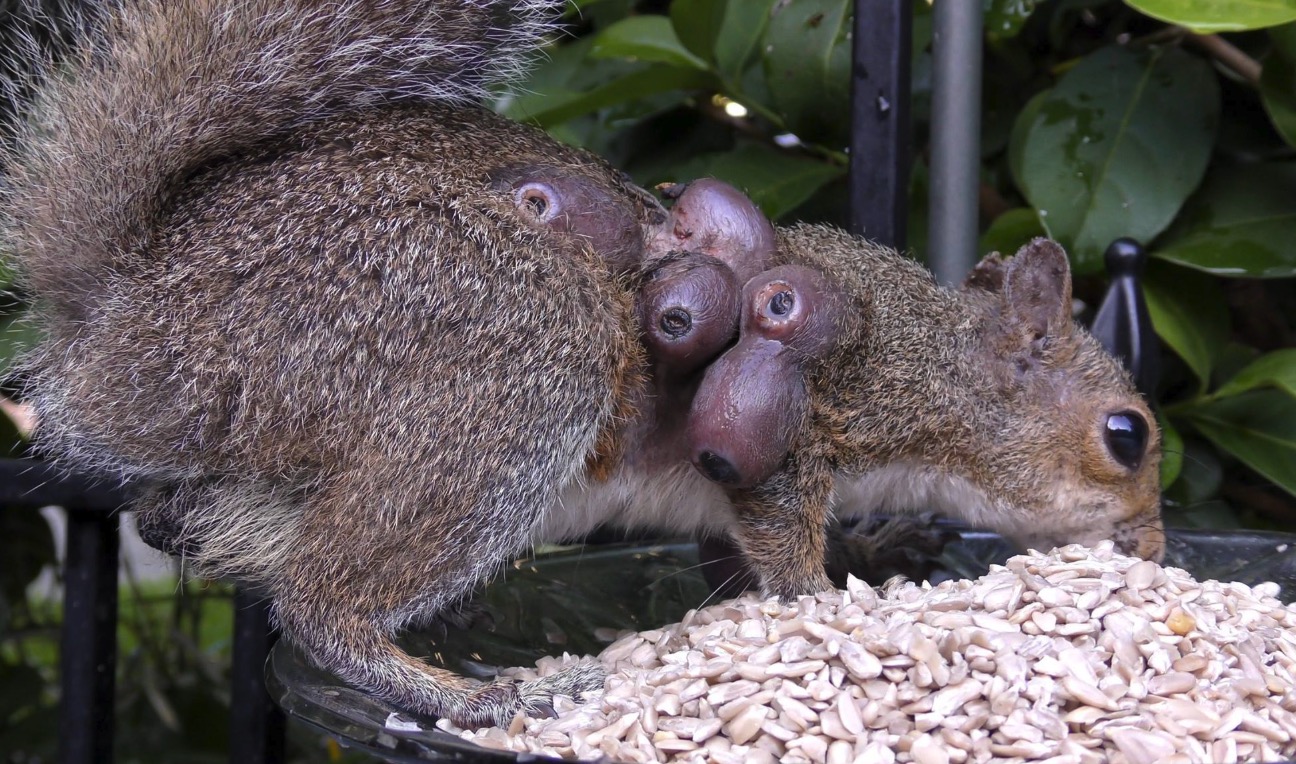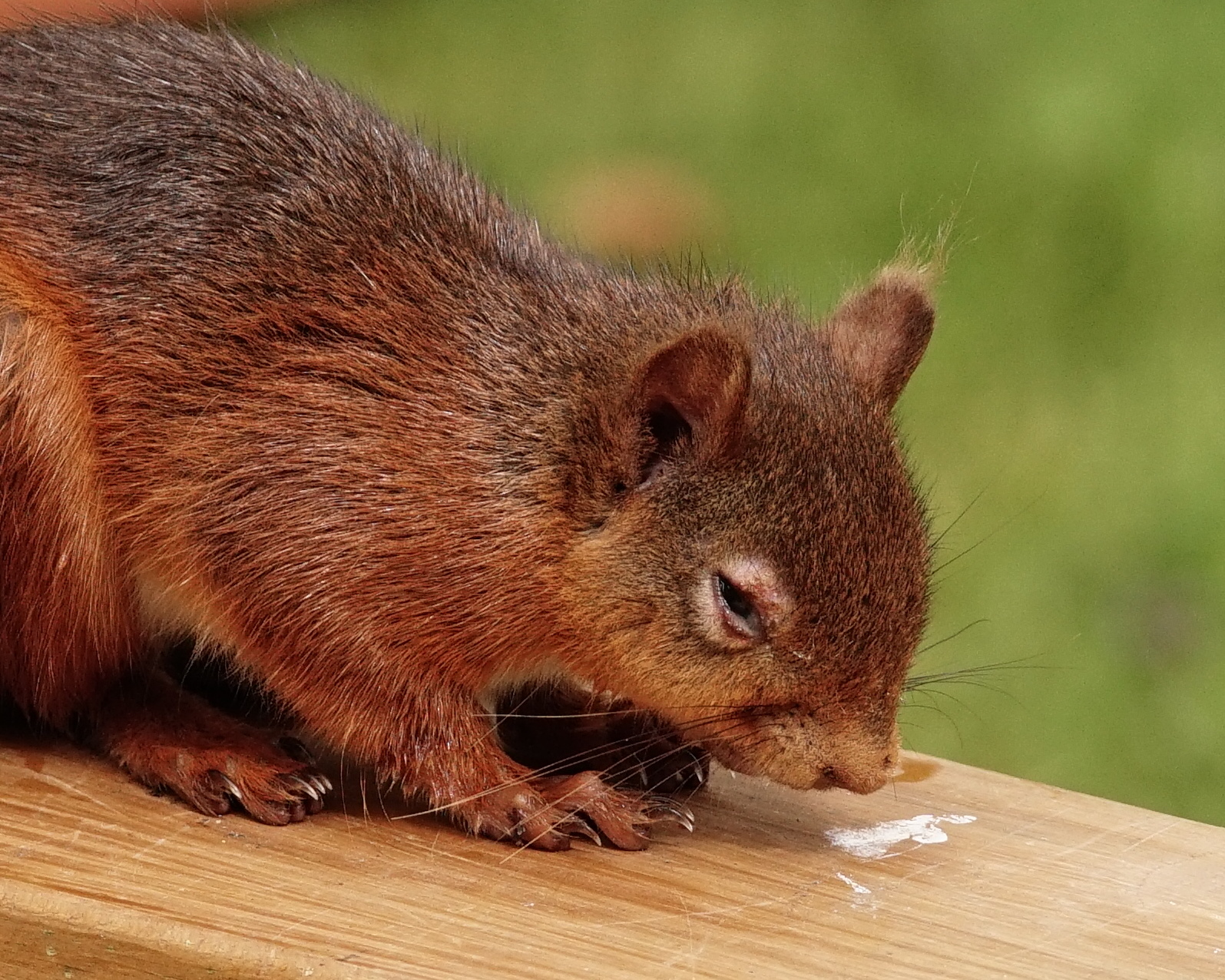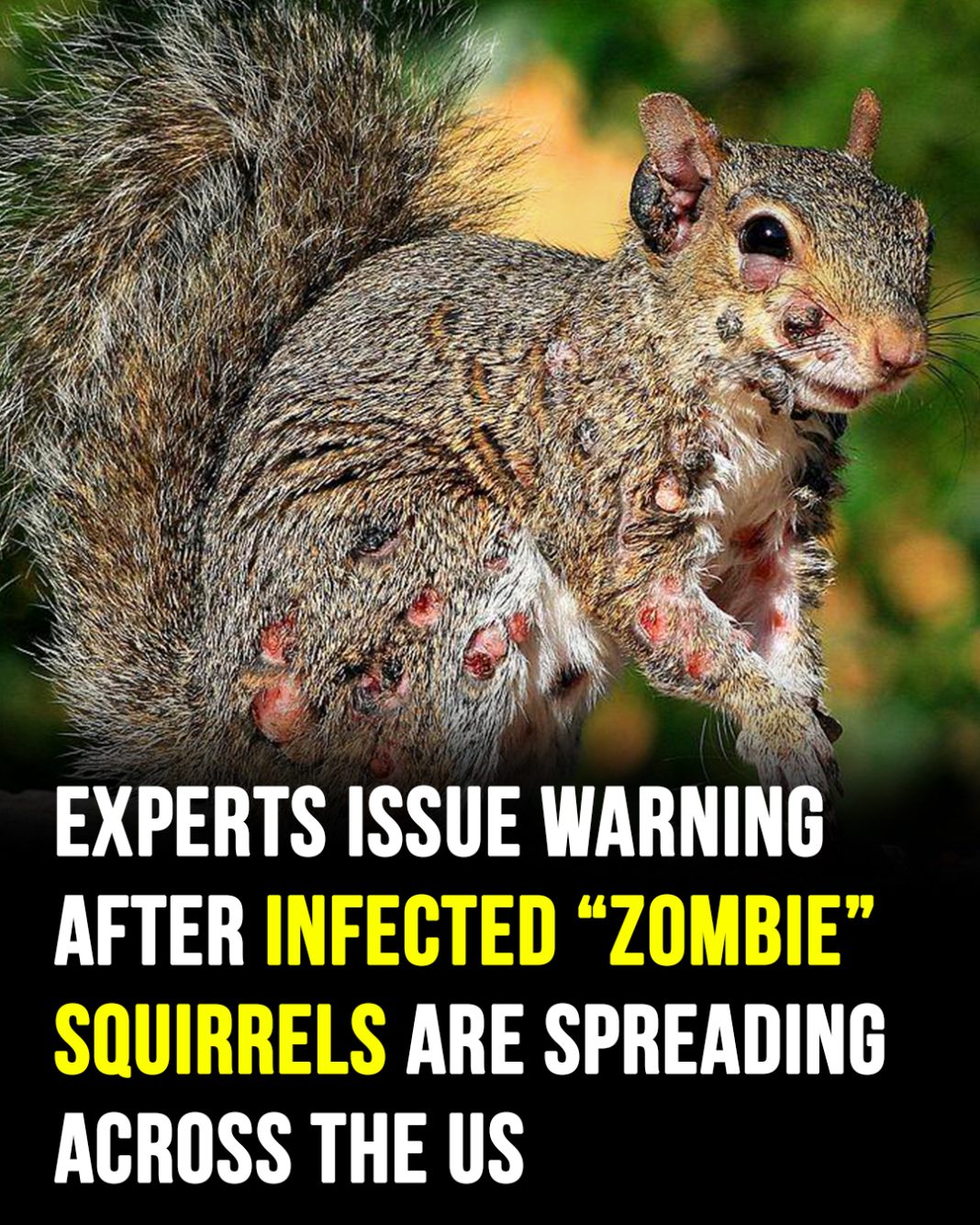Understanding the Unsettling Phenomenon of Squirrel Pox
In recent months, a wave of concern has swept across the United States as homeowners report alarming sightings of squirrels afflicted by bizarre skin conditions. These conditions include leaking sores, wart-like lumps, and disfigurations that many liken to a scene from a horror film. Traditionally viewed as playful and charming creatures, squirrels are now being portrayed in a much darker light. The unsettling images circulating on social media platforms such as Reddit and Facebook depict squirrels that have fallen victim to a condition known as squirrel pox. This phenomenon has not only captured the attention of wildlife enthusiasts but also sparked discussions regarding zoonotic diseases and the implications for wildlife management.
The Emergence of Squirrel Pox
Squirrel pox is a disease caused by a naturally occurring virus that predominantly affects tree squirrels. Although not a new phenomenon, it has gained significant attention due to its visible impact on these animals. Reports began surfacing in early 2023, particularly from residents in Maine, who observed squirrels exhibiting grotesque growths and open sores. Wildlife expert Shevenell Webb from the Maine Department of Inland Fisheries and Wildlife has acknowledged the presence of this virus, advising the public to refrain from intervening with infected squirrels. “It’s a naturally occurring disease, and it usually runs its course,” Webb explains, cautioning against attempts to capture these afflicted animals. This statement has been a crucial part of the ongoing discourse on the importance of allowing wildlife to manage their health challenges without human interference.

Transmission and Symptoms of the Disease
The mode of transmission for squirrel pox is akin to how diseases spread among humans. The virus is primarily disseminated through mosquito bites or close contact at feeding stations, mirroring situations in crowded human environments where infections can easily spread. Webb elaborates on this by drawing a parallel: “It’s like when a lot of people gather. If someone is sick and it spreads easily, others are going to catch it.” Symptoms can include swelling, scabbing, and in some cases, severe disfigurement, leading to alarming sightings that have caught the public’s eye. While these disfiguring symptoms can be distressing, it’s essential to note that the disease is not typically fatal. Many infected squirrels manage to survive unless the growths impair their ability to eat, see, or move, leading to a natural attrition that allows healthier members of the population to thrive.
The Disturbing Reality and Public Reaction
The unsettling appearance of these squirrels has led to a spike in social media discussions, with many users expressing shock and concern. One Twitter user exclaimed, “Zombie squirrels?! Seriously?!” as they shared photographs of afflicted animals. Such reactions speak to the broader cultural fascination with wildlife encounters, particularly those that challenge our understanding of these creatures. Some individuals, like one user who posted a heartbreaking image of a squirrel’s face overtaken by growths, wondered about the survival prospects for these creatures. Fortunately, wildlife agencies, such as the North Carolina Wildlife Resources Commission, have clarified that squirrel pox is species-specific and poses no threat to humans, cats, or dogs. However, it is important to note that domestic rabbits may be at risk, creating a nuanced discussion about the interplay between urban wildlife and domestic animals.

Other Causes of Skin Abnormalities
While squirrel pox is the most recognized cause of these alarming symptoms, it is not the sole culprit. Wildlife rehabilitators have reported encountering squirrels with skin swellings caused by botfly larvae, which are parasitic insects that burrow beneath the skin. This further complicates the situation as the staff at various wildlife clinics, including Evelyn’s Wildlife Refuge, emphasize the need for trained professionals to handle such cases. The increase in reports about infected squirrels—from Maine down to Virginia—has raised awareness about the health of wildlife populations, igniting discussions around wildlife diseases and public responsibility. These reports might also serve as a warning, highlighting the necessity for ongoing research into wildlife health and the factors contributing to emerging infectious diseases.
Hope and Recovery for Afflicted Squirrels
Despite the grim outlook associated with squirrel pox, there is a glimmer of hope. Some infected squirrels do manage to recover fully, although they may bear scars from their ordeal. One wildlife enthusiast shared an encouraging update about a squirrel that had successfully recovered from severe symptoms, stating, “He beat the worst squirrel pox I’ve ever seen and is recovering well. Bad scars, but full function—and he’s even socializing again!” Such stories underline the resilience of wildlife and emphasize that not all cases lead to dire consequences. Furthermore, these narratives can foster a sense of compassion among the public for these creatures, promoting a greater understanding of their struggles and the need for conservation efforts.
Best Practices for Wildlife Interaction
In light of these developments, experts strongly advise against attempting to capture or intervene with infected squirrels. If you’re concerned about the health of wildlife in your area, it is recommended to take down bird feeders to minimize gatherings of squirrels and other animals, allowing nature to take its course. While the concept of “zombie squirrels” may be unsettling, it serves as a reminder of the delicate balance of wildlife ecosystems. Staying informed, respecting natural habitats, and avoiding unnecessary contact with wildlife are crucial steps in ensuring the well-being of these creatures. After all, even the smallest inhabitants of our neighborhoods deserve space to heal and thrive. Engaging in responsible wildlife observation and supporting local wildlife organizations can contribute positively to the health of our ecosystems and the various species that inhabit them.

















